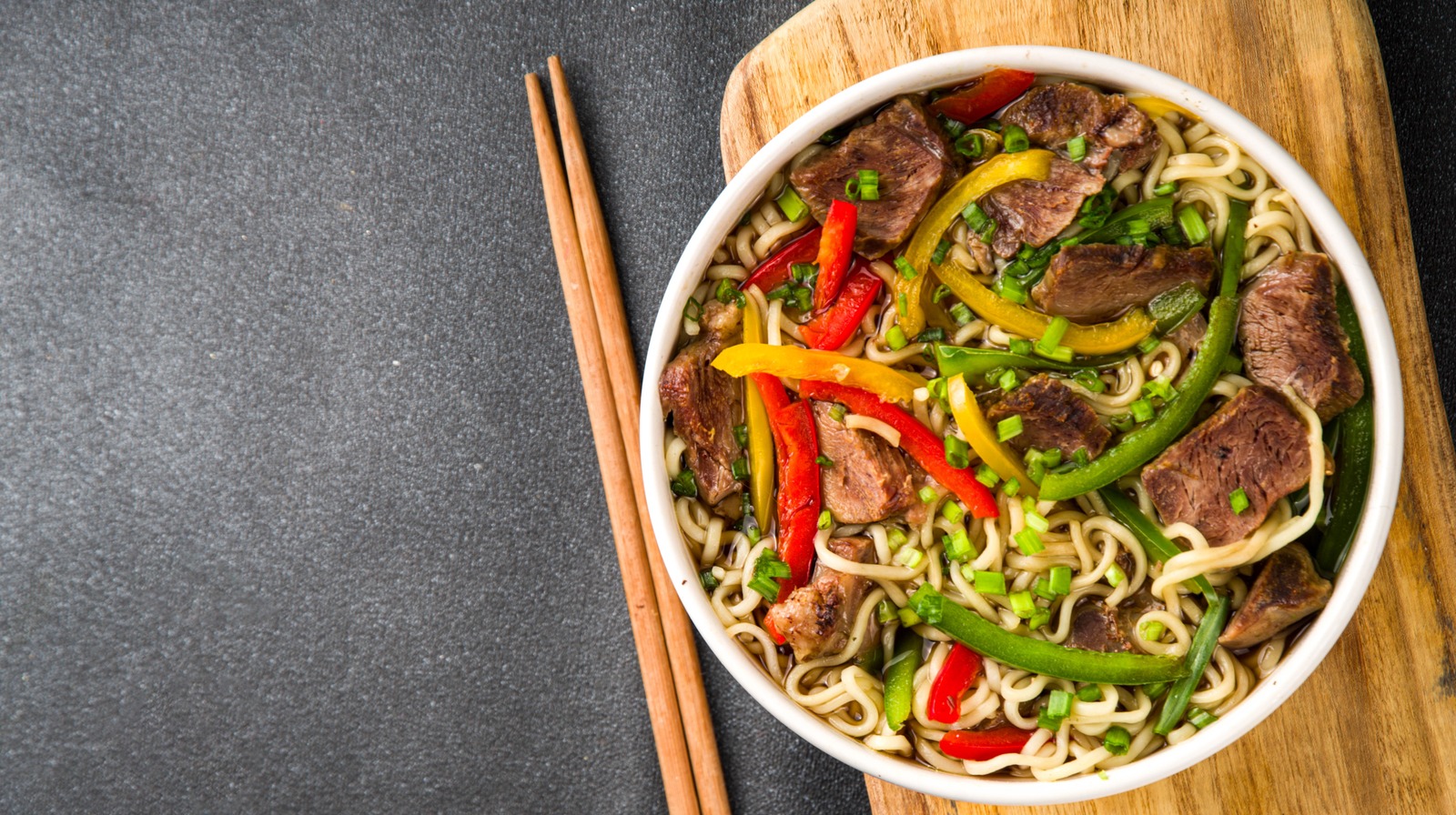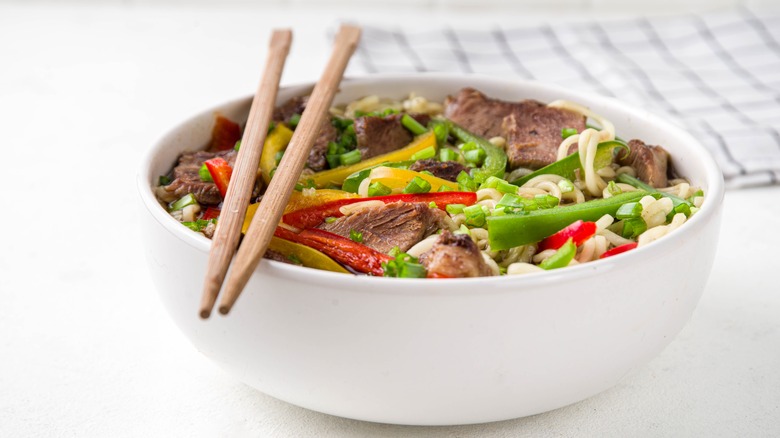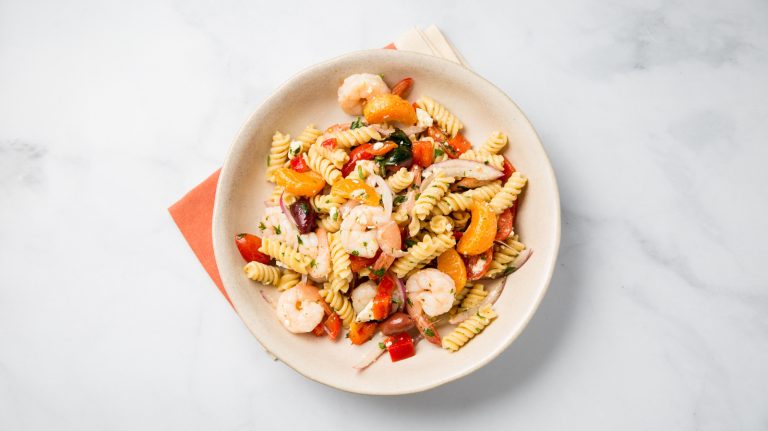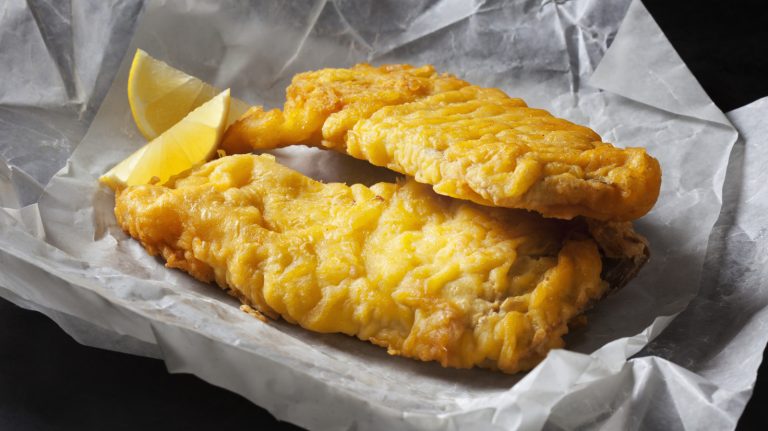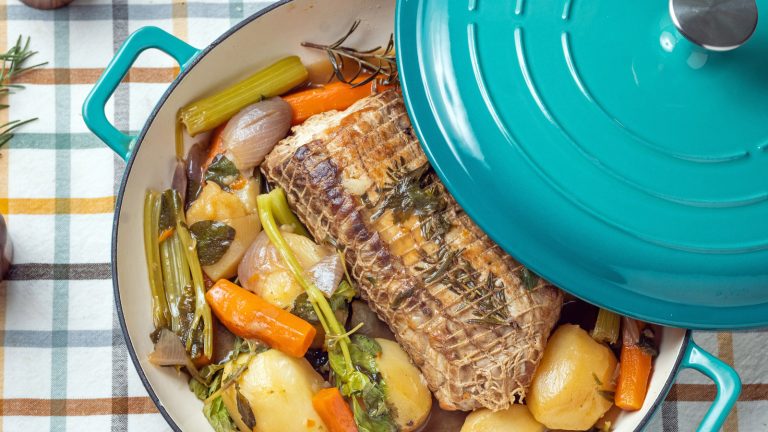Lo mein’s widespread popularity in American-Chinese dining is easy to understand. Merging a comforting pairing of beef, vegetables, and egg noodles — all tied together in a flavorful sauce — it’s a dish that’s simple yet effective. And as opposed to the subtle difference that distinguishes lo mein from chow mein, the noodles only require a boil (no need to stir-fry after), which eases the former’s preparation. Subsequently, the magic of the dish lies in the chosen ingredients, with the steak selection especially making a difference.
The beef is prepared in a stir-fry style, meaning it is thinly sliced, marinated, and quickly sizzled at high heat. As a result, the cut you choose needs to be suitable for such cooking. Several cuts are fit for the job, with flank steak the especially popular option. As a flavorful steak cut that won’t break the bank, flank is packed with a beefy taste, while its lean composition is ideal for cutting into small slivers and cooking at high heat. Other delicious options include skirt steak (which is only slightly different from flank), as well as fattier sirloin. Just remember, you’ll need to slice your beef cut against the grain and cook quickly — only around a couple of minutes total. So a relatively flat yet well-flavored cut of beef yields the tastiest lo mein.
The beef in lo mein should be built for stir-frying
As with other stir-fries, lo mein shines with a combination of varying textures and flavors. The dense, slightly chewy noodles — also called lo mein — are the dish’s cornerstone, complemented by the variable assortment of stir-fried vegetables. The beef further enhances with its meaty consistency, but it’s not the star of the show; this isn’t a steak-forward dish. In fact, it’s even suitable to make lo mein with chicken, pork, or a vegetarian version too.
Consequently, there’s no need to opt for a pricey cut like a strip steak or ribeye; the composition of well-marbled beef won’t translate in the dish. Instead, a cut that’s uniformly textured and easy to slice into equal-sized slivers is key. There shouldn’t be any connective tissue or muscle fibers — if present, they need to be trimmed prior to preparation. For this reason, it’s best to avoid cuts from the chuck and other beef parts reserved for braising.
Furthermore, it’s fine if the cut is lean; the marinade will do the job of flavoring the steak more so than its own low fat composition. Hence, it’s best to source from less premier but flavorful primals, like the flank and plate on the underside of the cow. And savvily stir-frying such beef cuts also helps keep down the dish’s cost. So as long as you quickly sear such beef types in a hot wok, the resulting lo mein will impress.


